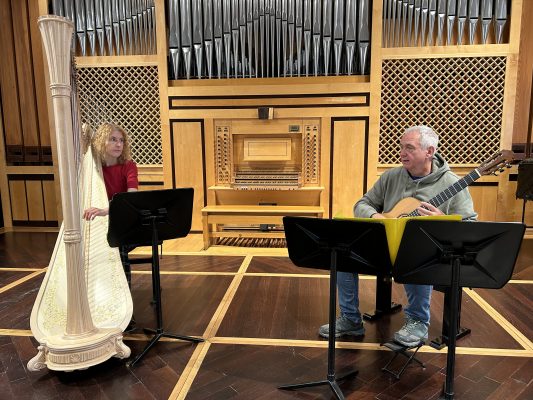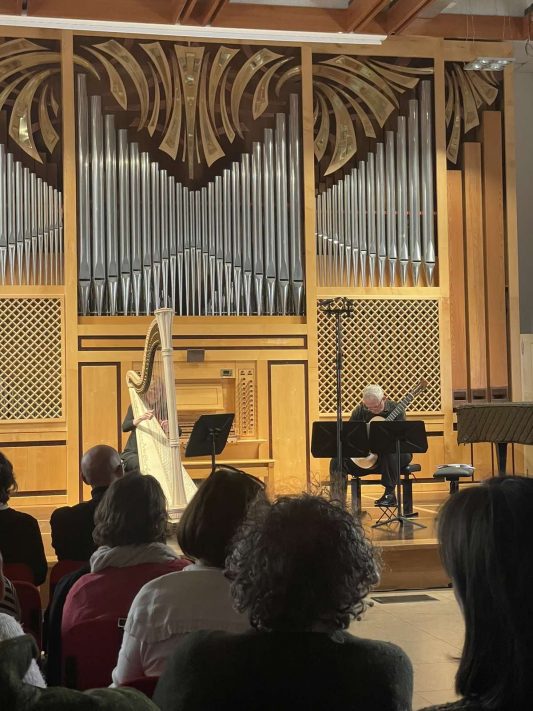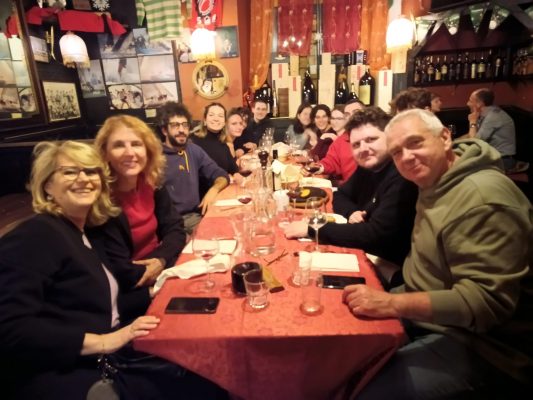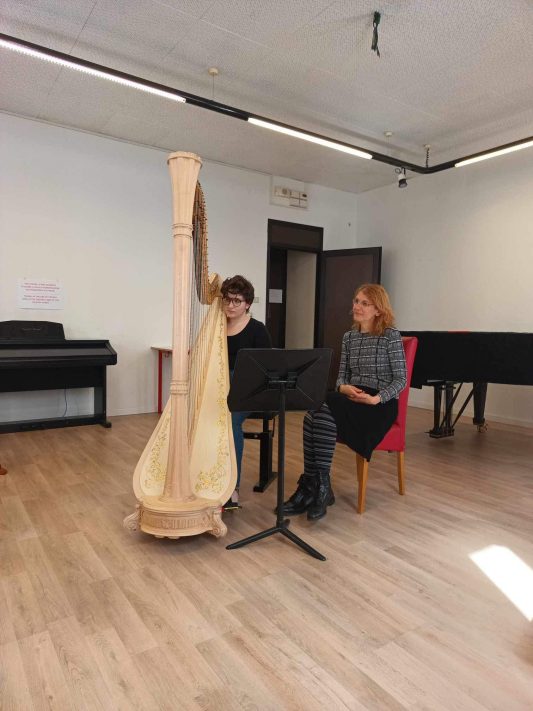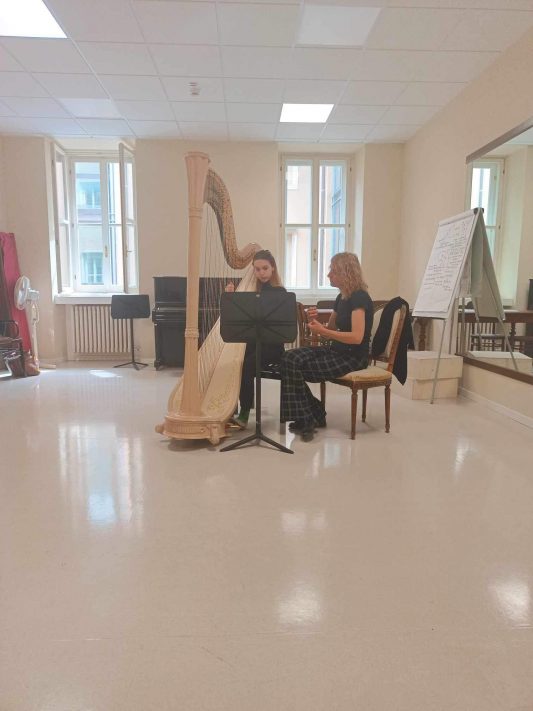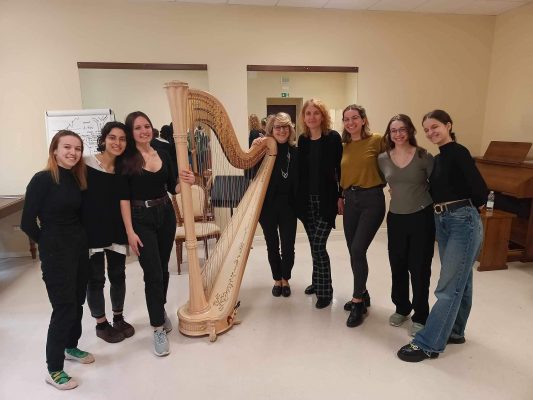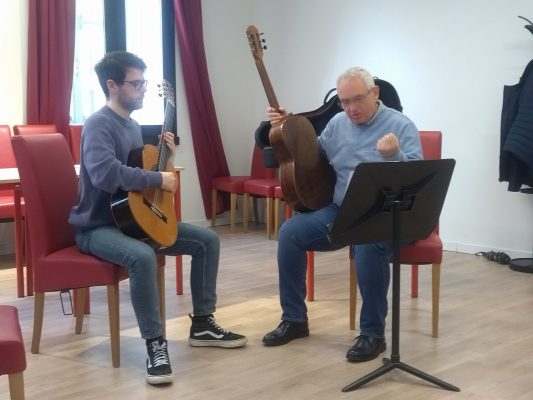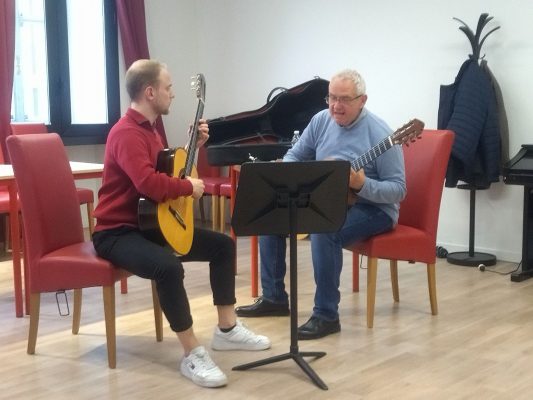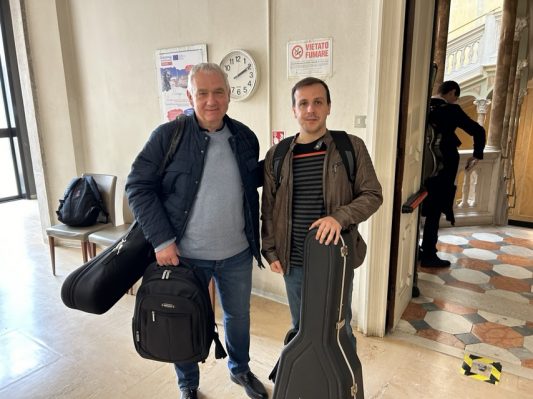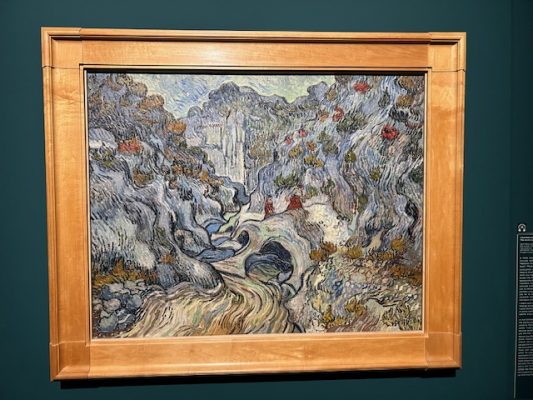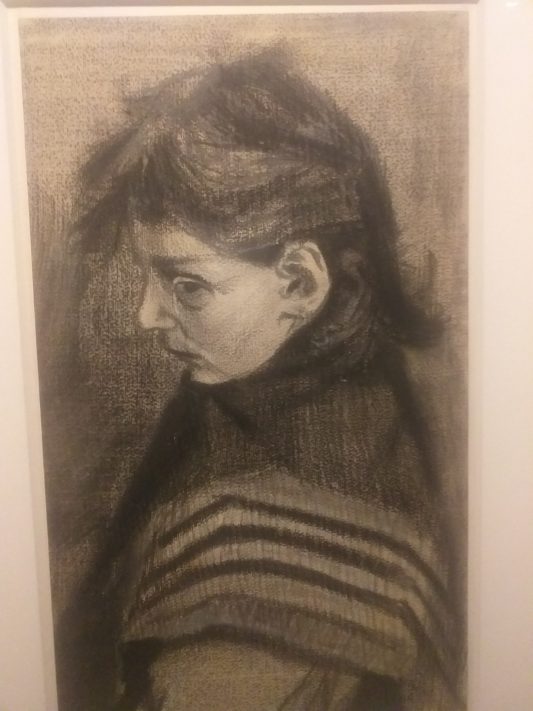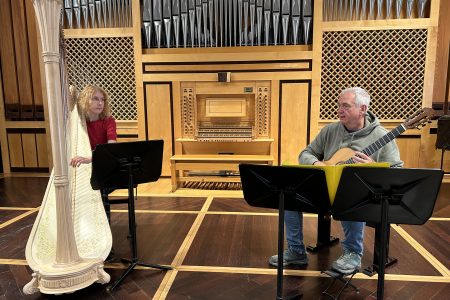
MUSICAL COOPERATION OF PLUCKED INSTRUMENTS IN TRIESTE: Milena Stanišić and Srdjan Tošić
Milena Stanišić and Srdjan Tošić
University of Arts in Belgrade, Faculty of Music
Erasmus+ Mobility for Teaching at:
“Giuseppe Tartini” State Conservatory in Trieste
As a part of the Erasmus + Program (Teaching Mobility), we have spent three days at “Giuseppe Tartini” State Conservatory in Trieste (April 16th-18th 2024).
On April 16th we presented a concert of music for guitar and harp at the Giuseppe Tartini concert hall. Major works written for this combination of instruments were presented (Sonata by Alen Hovhaness and Suite Magica by Maximo Diego Pujol), as well as pieces written by Serbian composers (Any Day My Way by Dragana Jovanović, Japanese-Serbian Circle Danse by Miloš Raičković, Medial 1 by Vladimir Tošić) and our transcription of Mishima (from 1957: Award Montage) by Philipp Glass. The concert was very well attended. It was especially gratifying that so many students of guitar and harp were present. Actually, as we realized later, not only a couple of students currently playing in guitar- harp duo, but also professor of harp Nicoletta Sanzin and professor of guitar (and currently Director of the Conservatory) Sandro Torlontano also perform together. Bearing in mind that this kind of chamber music ensemble is not customary, this fact was a fantastic coincidence. As the available repertory for this combination of instruments is very limited, our concert was inspiring – as we presented the new pieces by Serbian composers recently composed for us. Also, we had a great opportunity to discuss the specificity of the musical requirements that playing in such an ensemble requires. We also debated the relationship to other arts, especially painting, in correlation to how to create a large palette of colours and moods using these two subtle instruments. This discussion was additionally inspired by the fact that there was an extraordinary exhibition dedicated to the most beloved artist of all time, Vincent van Gogh, in the Revoltella Museum in Trieste. Most naturally, we used our spare time to visit the exhibition.
Professor of guitar Eugenio Della Chiara and professor of harp Nicoletta Sanzin provided, as well as other Conservatory’s staff, great care and warm hospitality during our stay in Trieste.
Teaching harp students: Milena Stanišić
During my stay days, I performed 10 hours of teaching according to the schedule provided by the Conservatory International Relations Department. Pedal harp lessons that I performed were focused on soloistic repertory.
This teaching mobility at “Giuseppe Tartini” Conservatory was beneficiary for me in several aspects. I had the opportunity to work with students and pupils of different age groups and levels of preparedness, which is always challenging particularly in the aspect of deciding what is useful to address during this (short) period of teaching. As all the students and Professor Sanzin were present during lessons – we had the opportunity to discuss different approaches to several issues – technical solutions to fingering, muffling, pedalling, as well as articulation, phrasing, and especially the ability to produce beautiful sound and the correlation of that need to all other aspects of harp playing. Therefore, I have shared my knowledge and personal systematization of the processes, relations between various aspects, and prioritizing in work practice. We compared different teaching methods, analyzed the advantages and disadvantages of concrete problems, and discussed viable solutions. I was pleased to see that some of my suggestions received excellent feedback from the students, and hopefully, they will use gained knowledge in the future.
Additionally, we had very constructive conversations on music in general, connection to other art subjects, diversities in music education systems in Italy and Serbia, the methods of teaching different subjects (pedal harp, lever harp and orchestral parts for the harp), differences in pedagogical approach to harp students compared to younger pupils (as Conservatory in Trieste also educates children at primary and secondary level), etc. We also discussed the professional needs of harp students in Trieste and Belgrade and the possibilities for further cooperation between our two classes.
This was very significant for me, because of the direct opportunity to understand the system of music education in a foreign country, acceptance of new teaching methods and promotion of the education process at the Faculty of Music in Belgrade.
Teaching guitar students: Srđan Tošić
During my stay in Trieste, I deliver altogether 12 lessons, working with students in both Bachelor and Master studies, as well as with one chamber duo (two guitars). All students performed high quality concert programme, consisting of pieces from Baroque to Contemporary music (Bach, Scarlatti, Giuliani, Regondi, Granados,Tedesco, Mompou etc.). The issues that were discussed were quite usual, but also substantial for any good performance: quality of sound, projection of guitar sound, matters of articulation and phrasing applied to various styles, dynamic and timbre changes, choice of tempi and some basics of chamber music (for the mentioned duo). Besides that, there were discussions about general topics which are of interest to all performers, like competitions, possibilities for organizing concerts and other public presentations, and the actual positioning of classical guitar in artistic music today. Here I have to say that such exchange of opinions, attitudes and experiences between colleagues of various ages but also various surroundings are of vital importance for widening one’s views, for possible plans for future and for better overall comprehending circumstances among which is classical guitar positioned today.
I didn’t miss an opportunity to attend an afternoon concert given by two students of Eugenio Della Chiara. The concert was given in Palazzo Gopcevich, in favour of promoting Classical Guitar studies at ”Giuseppe Tartini” Conservatory.
I also have to say that I’m of the impression of had a lot of benefits from this exchange: I had an opportunity to meet students from different environments, to see and hear their and their professors’ way of dealing with guitar, to compare them with my students and my way of doing same things, to see and also compare some characteristics of high musical education in EC with same education level in Serbia.
